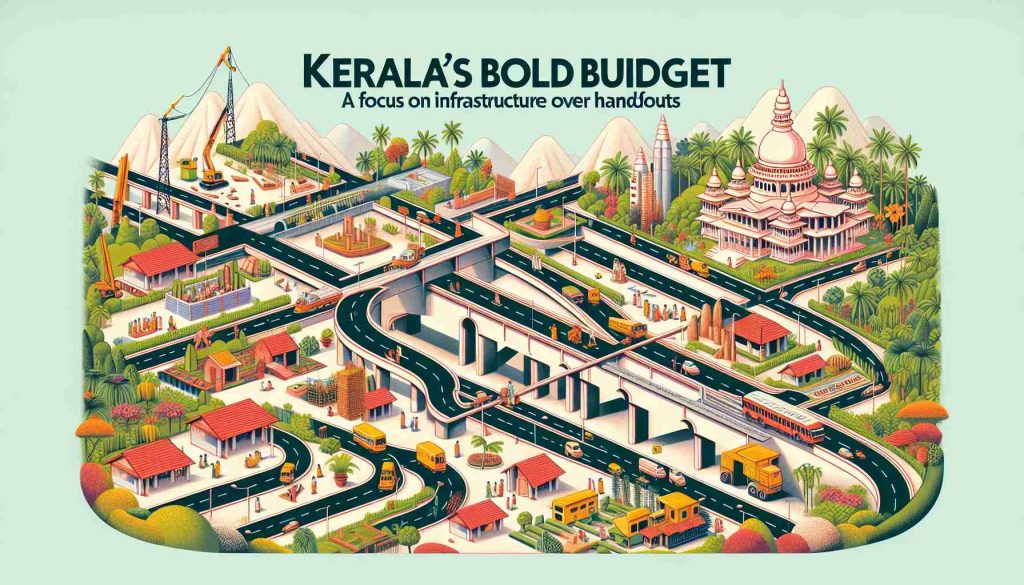- Kerala faces pressing fiscal challenges that require urgent financial rejuvenation.
- The state aims to shift towards a knowledge economy while seeking private investment opportunities.
- Development initiatives like IT parks and Global Capacity Centres could attract investors, but lack of substantial policy reforms hinders progress.
- Revenue expenditures are rising significantly, yet capital spending remains low, limiting long-term growth potential.
- Niti Aayog ranks Kerala poorly for financial quality, underscoring the need to reduce unproductive spending.
- Recent tax increases indicate a focus on government employee welfare rather than wider public concerns.
- The expanding middle class demands a budget that fosters economic growth and sustainability.
Kerala has long juggled fiscal challenges, and the latest budget reveals the state’s urgent need for financial rejuvenation. The finance minister acknowledges this pressing reality, emphasizing that more distress is not an option. With new economic opportunities on the horizon, Kerala is setting its sights on transforming into a knowledge economy, hinting at a willingness to embrace private capital.
Exciting moves like the development of IT parks, investment in Global Capacity Centres, and the establishment of a land bank signal a potential shift towards a more investor-friendly approach. However, while the rhetoric is promising, the budget lacks significant policy reforms that could pave the way for sustainable growth. Revenue expenditures are projected to rise by 7.79%, whereas capital spending lags behind at less than 10%. This indicates that Kerala remains tethered to high expenditure commitments without substantial investments that could boost long-term revenue.
Niti Aayog’s Fiscal Health Index paints a stark picture, ranking Kerala 15th out of 18 states for financial quality, prompting demands for a shake-up in unproductive spending and a search for new revenue sources. While land tax has seen a hefty 50% hike and electric vehicle tax increased, the budget appears more aligned with government employee welfare than addressing the everyday concerns of the average citizen.
In a state where the middle class is expanding, the call for a budget that prioritizes broader economic growth and sustainability is louder than ever. Kerala’s future hinges on its ability to transform words into action—will this budget inspire the necessary changes?
Transforming Kerala’s Economy: Opportunities and Challenges Ahead!
Fiscal Challenges and Economic Opportunities in Kerala
Kerala is at a crossroads, navigating significant fiscal challenges while simultaneously looking for economic rejuvenation through innovative strategies. The recent budget demonstrates this urgency, as finance minister recognizes that the status quo cannot continue. It’s clear that more proactive measures are necessary to stimulate the state’s economy.
# Key Developments
Kerala is actively pursuing the creation of IT parks, establishing Global Capacity Centres, and developing a land bank, indicating a strategic pivot towards enhancing its investor-friendly landscape. These initiatives aim not only to attract private capital but also to cultivate a knowledge economy that is essential for sustainable growth.
Nonetheless, despite the promising initiatives, notable policy reforms remain absent from the budget, raising concerns about the long-term viability of these economic strategies. Revenue expenditures are set to increase by 7.79%, while capital spending remains less than 10%, reflecting a reliance on high expenditure commitments without significant investments that could stimulate future growth.
# Market Insights and Predictions
According to Niti Aayog’s Fiscal Health Index, Kerala ranks 15th out of 18 states, highlighting critical areas for improvement in financial management. This ranking has intensified calls for tackling unproductive spending and seeking new revenue sources. For instance, while land tax and electric vehicle tax hikes demonstrate attempts to increase revenue streams, the budget heavily emphasizes government employee welfare rather than fostering broader economic growth.
FAQs: Understanding Kerala’s Economic Landscape
1. What are the main economic initiatives introduced in Kerala’s latest budget?
The budget highlights the development of IT parks, investment in Global Capacity Centres, and the establishment of a land bank. These initiatives aim to create an environment conducive to attracting private investment and developing Kerala into a knowledge economy.
2. How does Kerala’s fiscal condition compare to other Indian states?
Kerala ranks 15th among 18 states in terms of fiscal health, according to Niti Aayog’s Fiscal Health Index. This ranking underscores severe challenges in managing finances, with calls for increased accountability and efficiency in spending.
3. What are the potential consequences of the budget’s focus on government employee welfare?
While emphasizing government employee welfare may provide immediate support, it may divert attention and resources away from broader initiatives necessary for stimulating long-term economic growth and sustainability. This could lead to a stagnant economy if unproductive spending persists.
Conclusion: A Need for Action
Kerala’s future hinges on its ability to transition from rhetoric to concrete action. The state must embrace reform and sustainable practices to meet the aspirations of its expanding middle class and ensure that economic growth benefits all citizens.
For further insights, you can check out more information about Kerala’s economic strategies at kerala.gov.in.
















